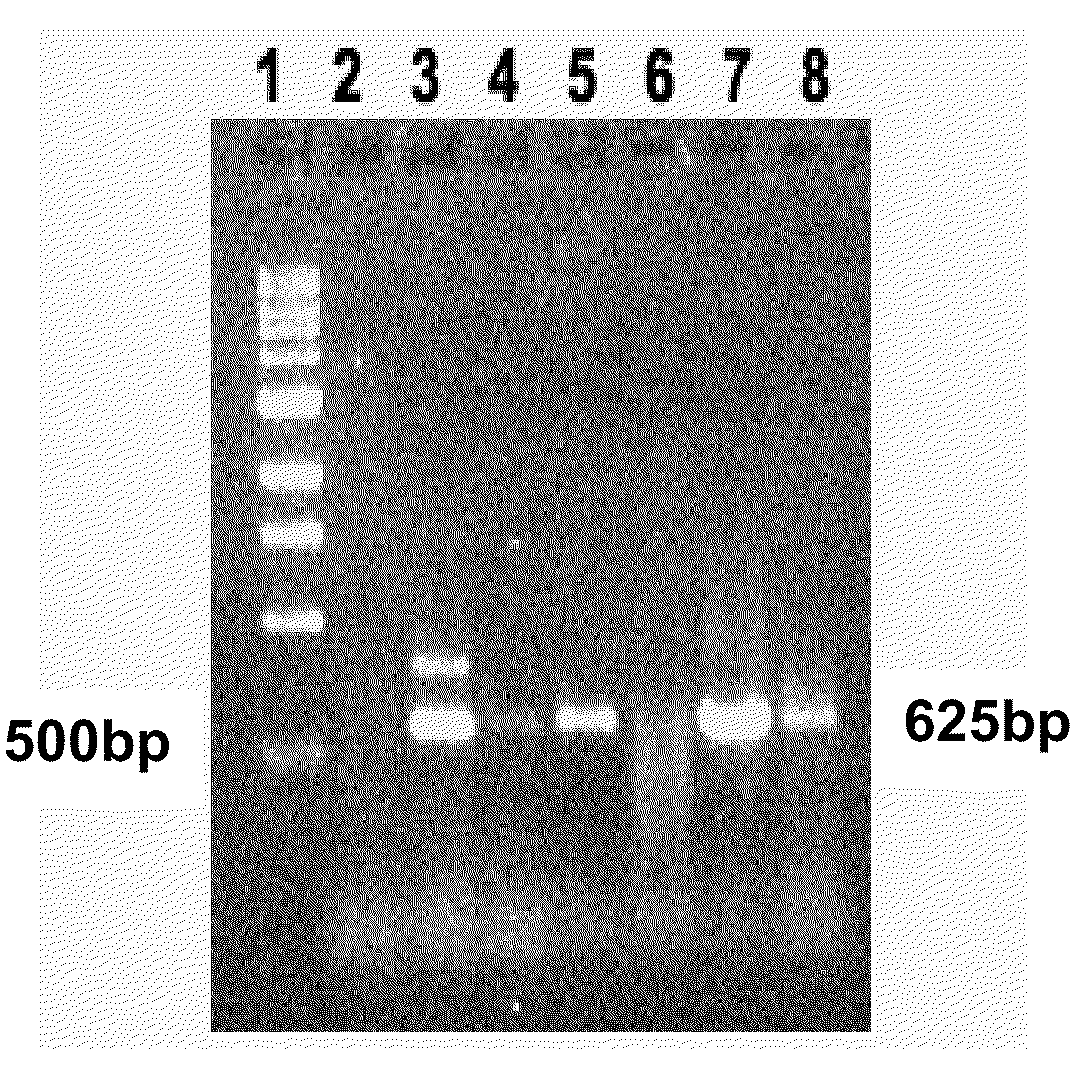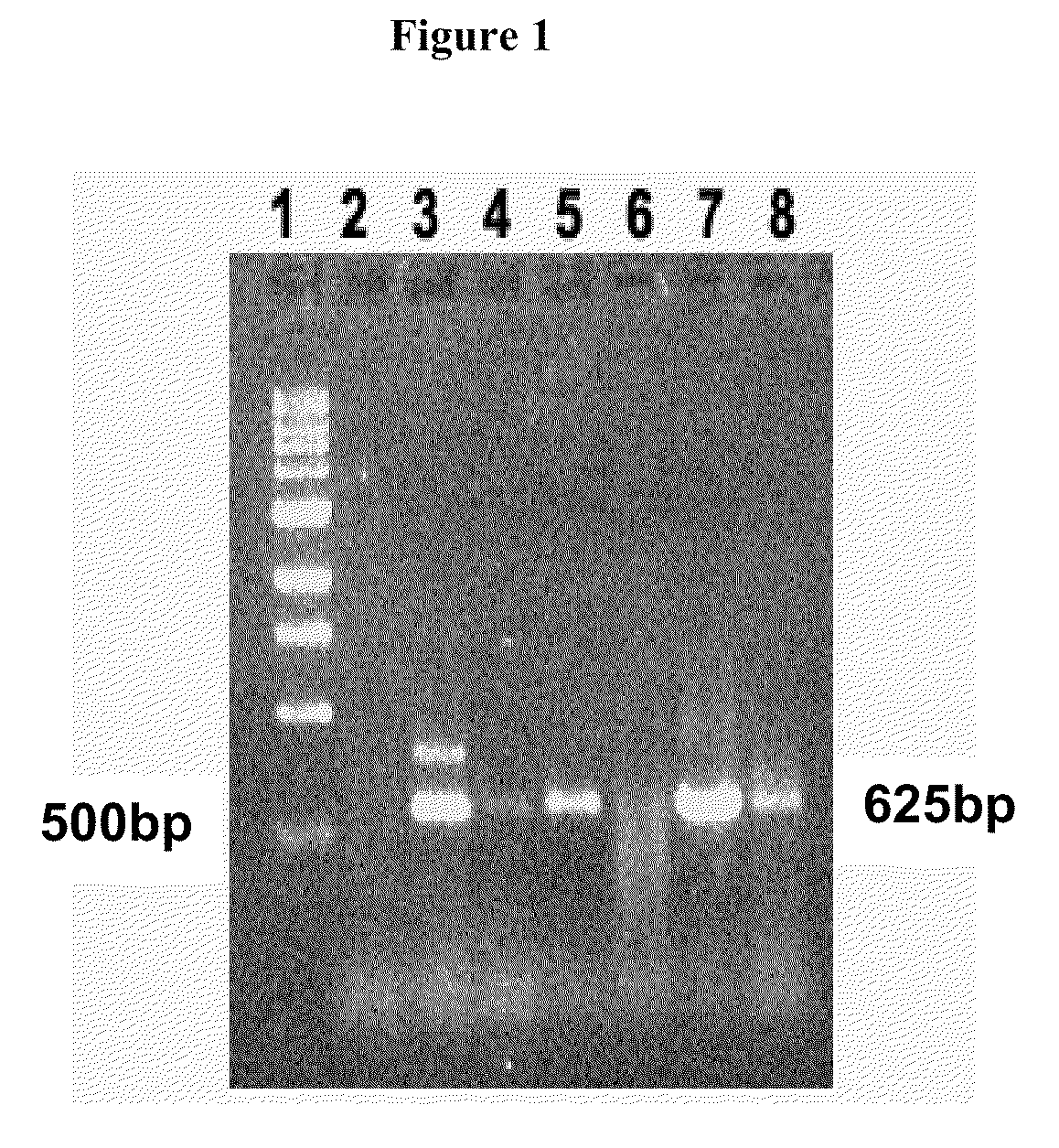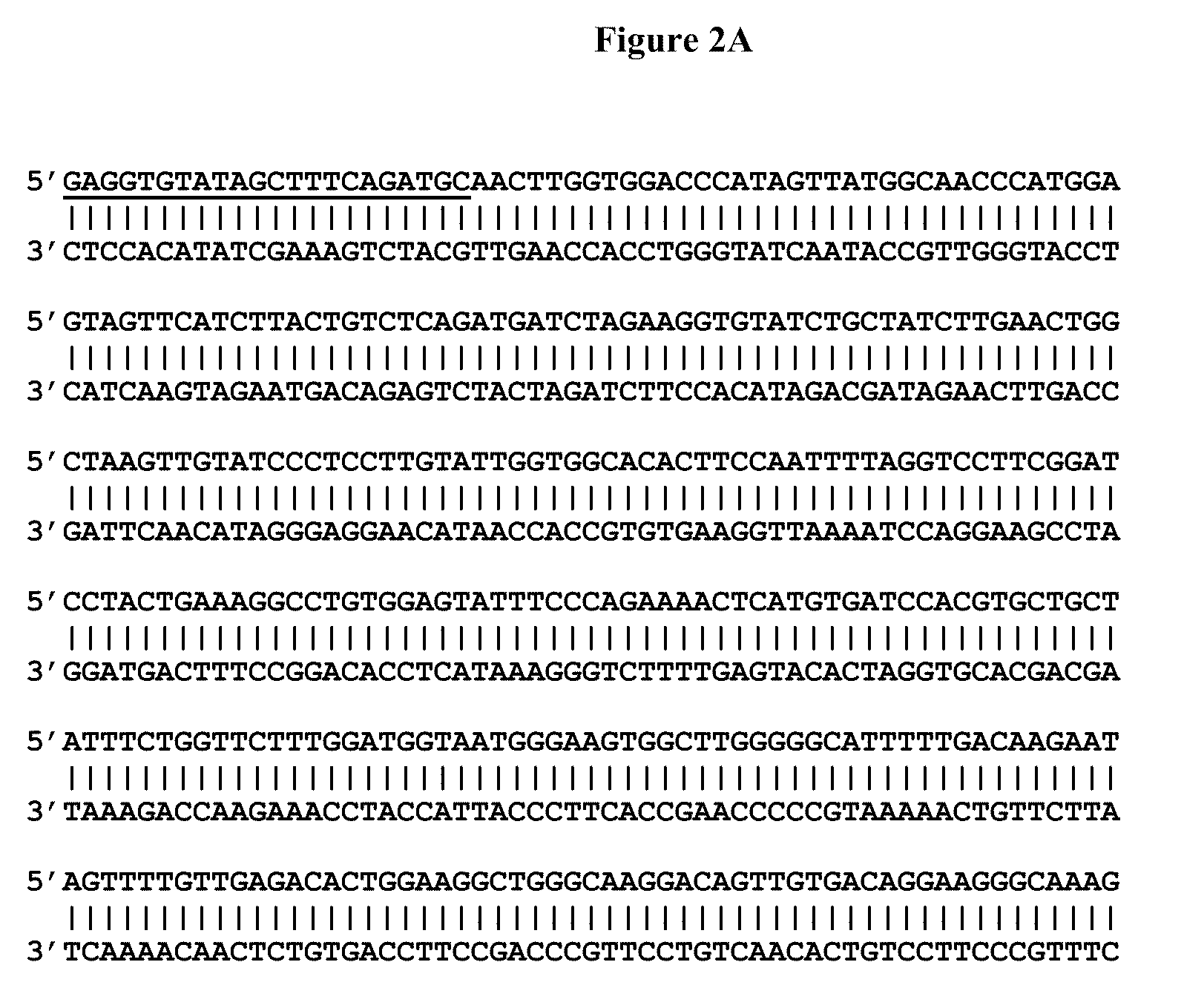ACETYL CoA CARBOXYLASE (ACCase) GENE FROM JATROPHA CURAS
a technology of acetyl coa and acetyl coa, which is applied in the direction of angiosperm/flowering plant, sugar derivative, enzyme, etc., can solve the problem that human consumption of food products is not healthy, and achieve the effect of enhancing the commercial value of the plant and increasing the oil conten
- Summary
- Abstract
- Description
- Claims
- Application Information
AI Technical Summary
Benefits of technology
Problems solved by technology
Method used
Image
Examples
example 1
Isolation and Identification of ACCase Gene in Jatropha
[0079]The mature seeds of Jatropha curcas were obtained from Andhra Pradesh, South India. The seeds were germinated in natural fields. Very young leaves were collected from 2-3 month old seedlings. The material was stored at −70° C. until use. The genomic DNA from above leaf material was extracted following methods provided with Sigma Gen Elute™ Plant Genomic DNA miniprep kit (Sigma, USA).
example 2
Formation of cDNA Clones Encoding ACCase
[0080]Design of degenerate oligonucleotide primers: The amplification of cytosolic ACCase gene from Jatropha curcas L. using degenerate primer strategy by PCR and its partial sequence is presented herein. Multiple primers with low degeneracy rate, particularly at the 3′ end, and in the intermediate fragments were designed based on the conserved sequence motifs of ACCase gene family of Zea mays (gi|1045304), Oryza sativa (japonica cultivar-group) (gi|3753346), Medicago sativa (gi|495724), Arabidopsis thaliana (gi|501151), Brassica napus (gi|12057068), Triticum aestivum (gi:514305) and Glycine max (clones 513 and 1221) (gi|1066856). The sequences were aligned using Clustal W. Twenty three combinations of degenerate oligonucleotide primers both in reverse and forward directions were designed and tested on the genomic DNA of J. curcas.
[0081]Protein sequences related to ACCase from higher plants were retrieved from the non-redundant public sequenc...
example 3
Genomic DNA Preparation
[0087]Jatropha curcas genomic DNA was prepared from leaf (Grown in DALSC) and callus using Genelute plant genomic kit (Sigma). Initially degenerate primers ME 23×ME 25 (towards 3′ end) and ME70×ME24 (towards 5′ end) primers were used to amplify the product from genomic DNA by Touch Down polymerase chain reaction (Table 5). After running PCR product on gel right bands were eluted (Qiagen kit) and cloned in pGEMT Vector (Promega) and sequenced. The results were analysed using BLAST (NCBI). Further degenerate primers ME58×ME86, ME 71×ME 59 were used to get rest of the sequence. Then, gene specific primers were designed from the sequence data, and other unidentified areas were explored. The following amplification programs were used for amplifying cytosolic ACCase from J. curcas.
TABLE 5Touch-down PCR program used in amplifying cytosolic ACCase from J. curcas L.Program 1:Program 2:Program 3:94° C., 3 min,94° C., 3 min,94° C., 3 min,94° C., 45 sec,94° C., 45 sec,94°...
PUM
| Property | Measurement | Unit |
|---|---|---|
| Fraction | aaaaa | aaaaa |
| Electrical conductance | aaaaa | aaaaa |
| Content | aaaaa | aaaaa |
Abstract
Description
Claims
Application Information
 Login to View More
Login to View More - R&D
- Intellectual Property
- Life Sciences
- Materials
- Tech Scout
- Unparalleled Data Quality
- Higher Quality Content
- 60% Fewer Hallucinations
Browse by: Latest US Patents, China's latest patents, Technical Efficacy Thesaurus, Application Domain, Technology Topic, Popular Technical Reports.
© 2025 PatSnap. All rights reserved.Legal|Privacy policy|Modern Slavery Act Transparency Statement|Sitemap|About US| Contact US: help@patsnap.com



